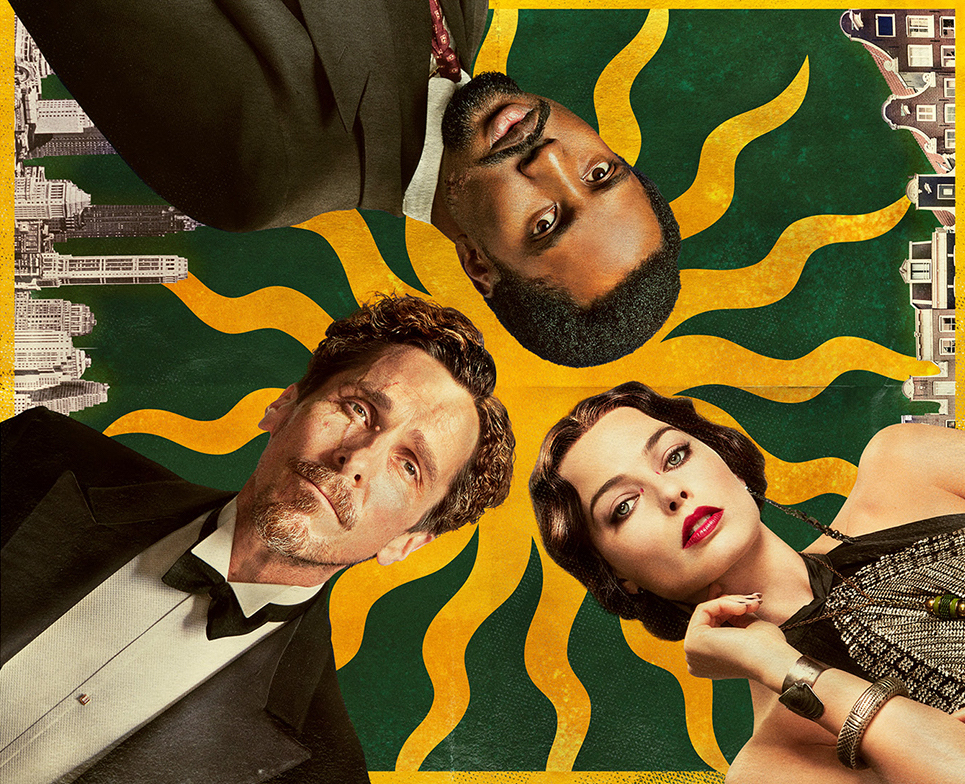
Film critic Maria Bastan-Sarabi reviews David O. Russel’s Amsterdam, finding the plot to be disappointingly convoluted
The saying that too many cooks spoil the broth is perhaps applicable for David O. Russell’s new star-studded Amsterdam. The film positions itself as a mysterious historical drama, while incorporating a light-hearted comedy into its dialogue. Despite the impressive cast list, including big names such as Christian Bale, Margot Robbie, John David Washington, Rami Malek, Mike Myers, Anya Taylor-Joy and Robert De Niro, Amsterdam lacks in coherence. Playing on the theme of history repeating itself, the jigsaw plot confuses the overarching tone of the film as the audience is left questioning whether Amsterdam positions itself as a historical tragedy or rather as a piece of satire.
The plot switches between the past and present, intertwining the freedom and art of Amsterdam with the politics and murders of New York
Amsterdam alludes to the 1933 Business Plot, a coup conspiracy with the intent to overthrow the US government under President Roosevelt. The plot follows three friends; Burt Berendsen (Christian Bale), a one-eyed doctor, Valerie Voze (Margot Robbie), an eccentric nurse, and Harold Woodsman (John David Washington), a humble lawyer , as they become entangled in the mysterious murder of a US general. The plot switches between the past and present, intertwining the freedom and art of Amsterdam with the politics and murders of New York.
Despite the lack of coherence within the plot, the production design and performances elevate David O. Russell’s film. The cinematographer, Emmanuel Lubezki, couples sepia tones with wide angle close-ups and long extended shots in an attempt to intertwine images of nostalgia with the uncertainty of what will occur next within these long takes. The composer, Daniel Pemberton, creates scores that are fluid and light, with slight jingles and a crescendo of beats to intensify the twisting narrative. Bale’s performance energises the film, his husky voice and exaggerated performance style coupled with hyperbolic facial expressions amplify the comedy within the film, while evoking the portrait of a bewildered man in desperation for love. Robbie’s performance is of equal quality, she adopts the persona of an eccentric, artistic rebel, with her new brown hair offering a refreshing image alongside her ability to provide a strong female voice in the film.
The cinematography, music and acting style allow Amsterdam to capture a perceived Wes Anderson style, as a comparison can be made with The French Dispatch (2021).
The film perhaps takes too long to reach its climatic end and loses the audience’s understanding along the way
Amsterdam’s box office loss most likely lies in the script and David O. Russell’s direction. At times, the film feels far too chaotic, with the plot filled with unnecessary excess, and thus many viewers perhaps struggle to perceive what is occurring in parts. The merging of different genres and the stark contrast between the scenes occurring in 1918 Amsterdam, as opposed to when the film returns to 1933, causes the film to lose its primary focus, with David O. Russel unable to find the point of equilibrium. With a two hour and fourteen-minute running time, the film perhaps takes too long to reach its climatic end and loses the audience’s understanding along the way.
Verdict:
Amsterdam’s core message about the repetitive nature of history, which is evoked through the end of the first world war and the looming presence of the second, as well as the urging need for human morality in the world, become lost within the mixture of sub-genres and plots. However, credit must be given to the high-quality aesthetic and performances in the film, but it is a shame that the narrative fails to reach the same standard.
Rating: 5/10
Amsterdam is in cinemas now
For more cinematic releases, check out these articles from Redbrick Film:
Comments